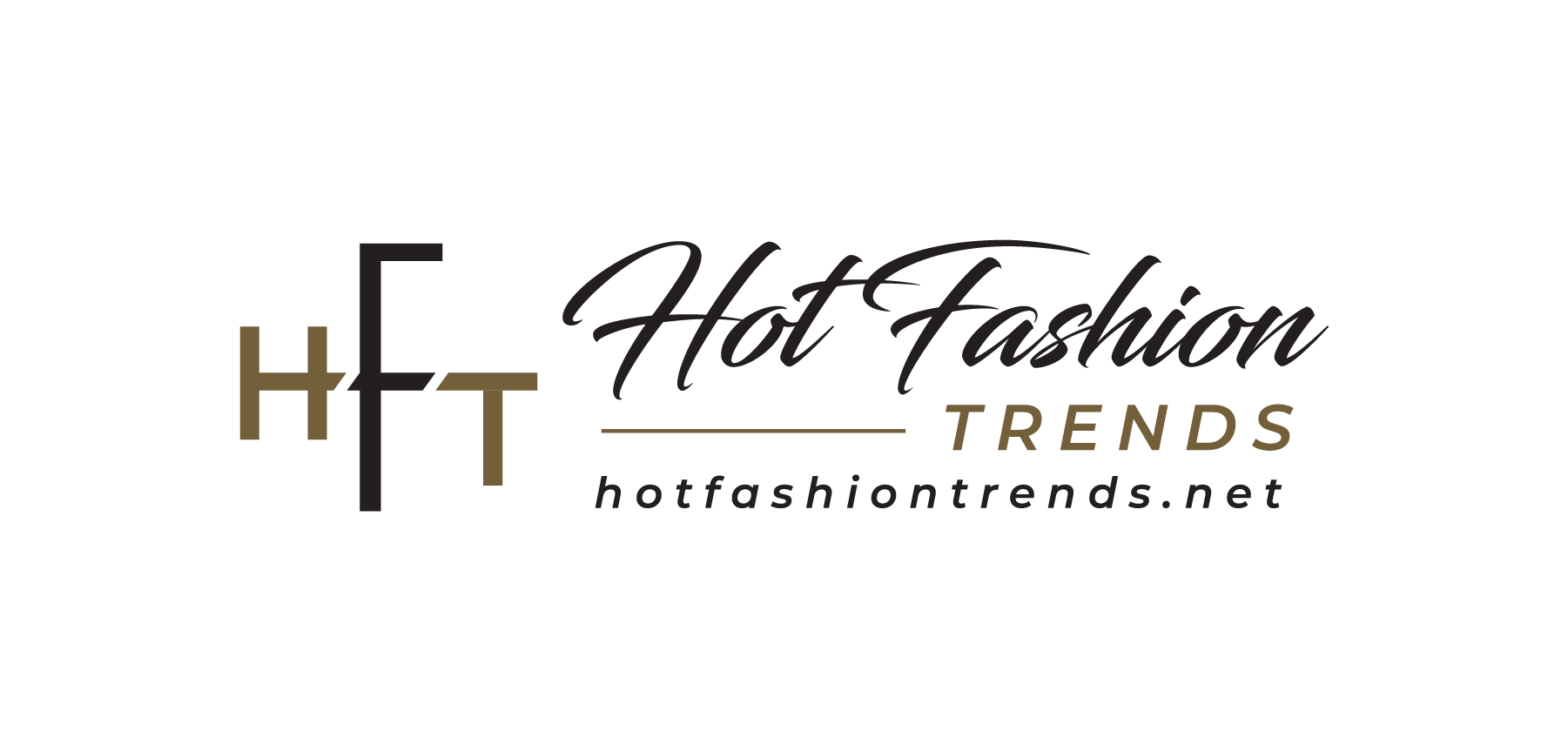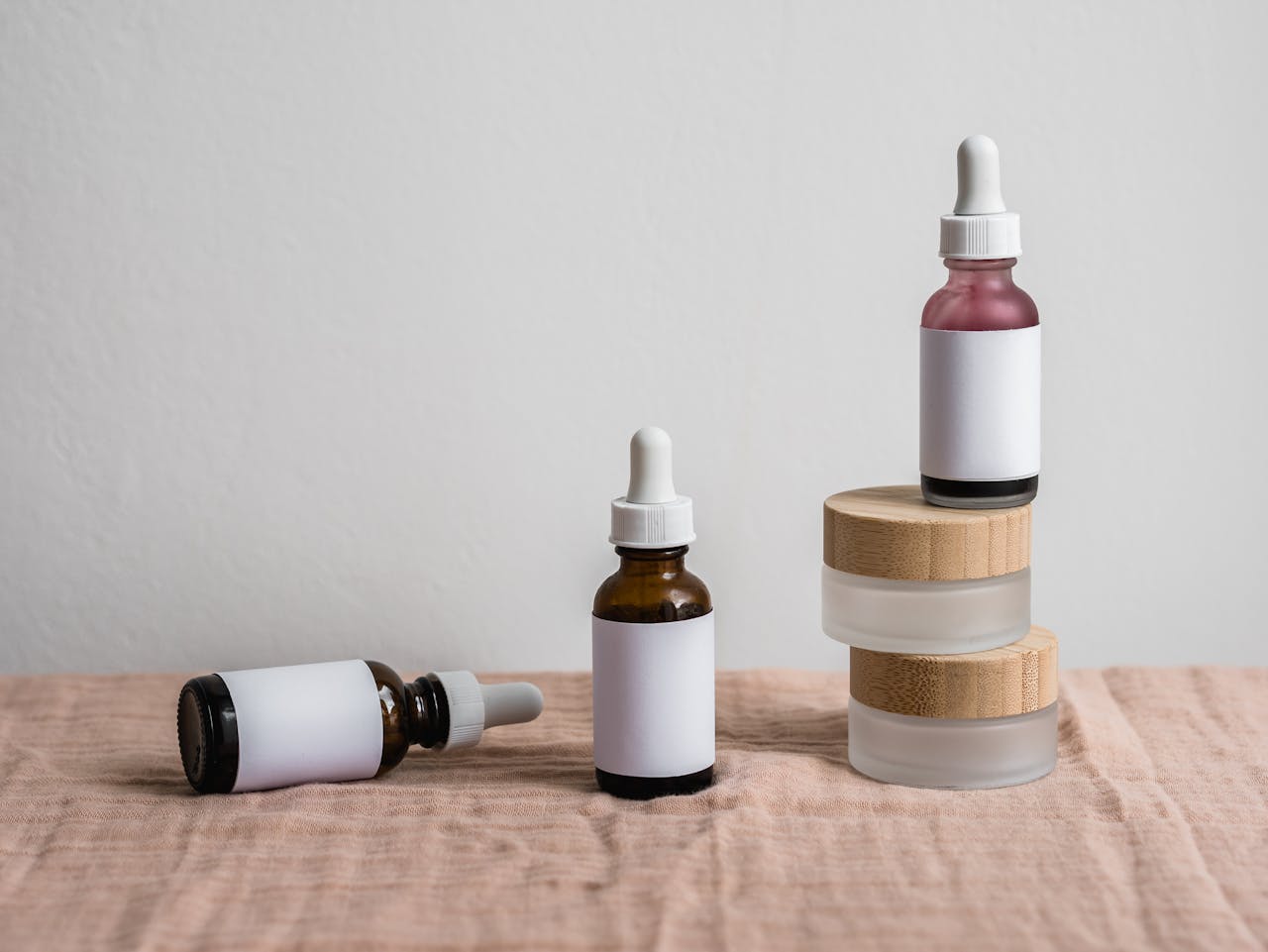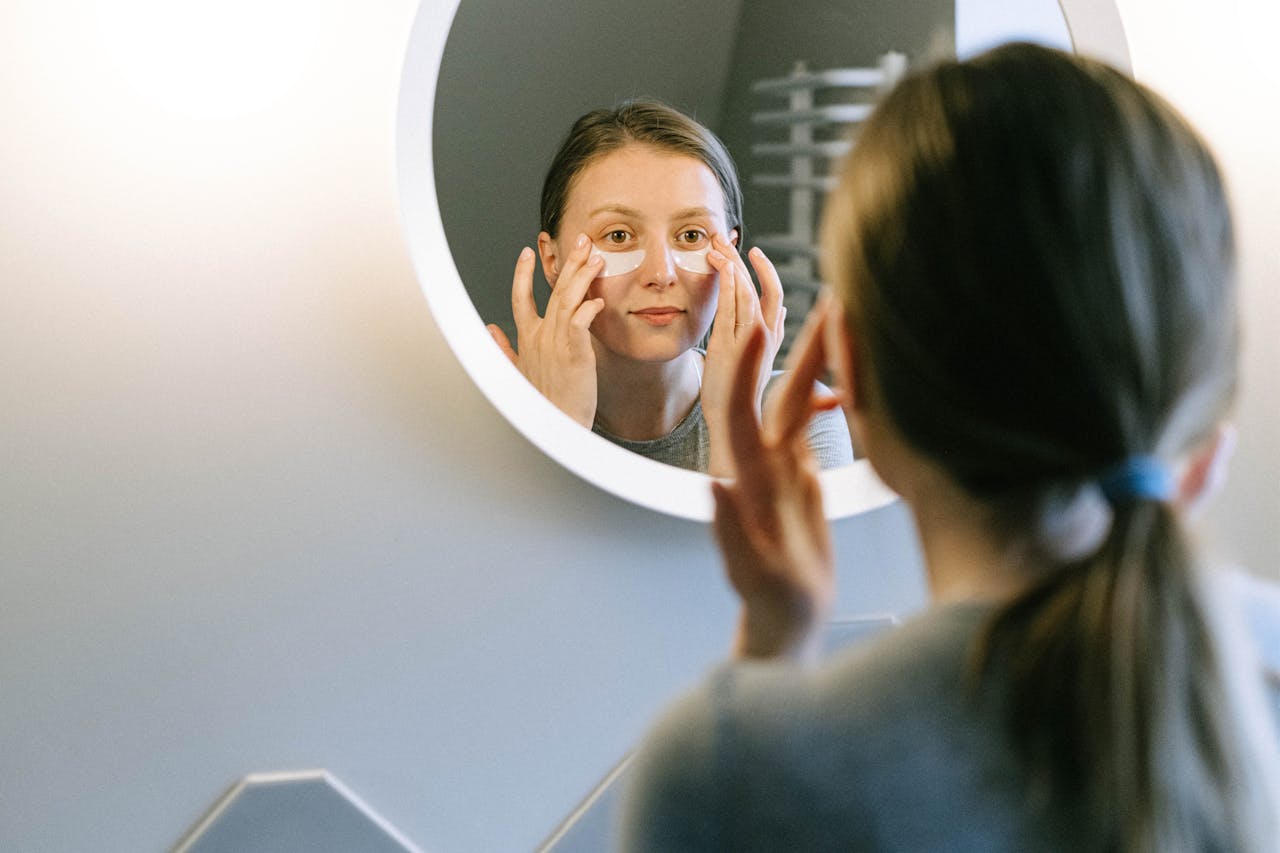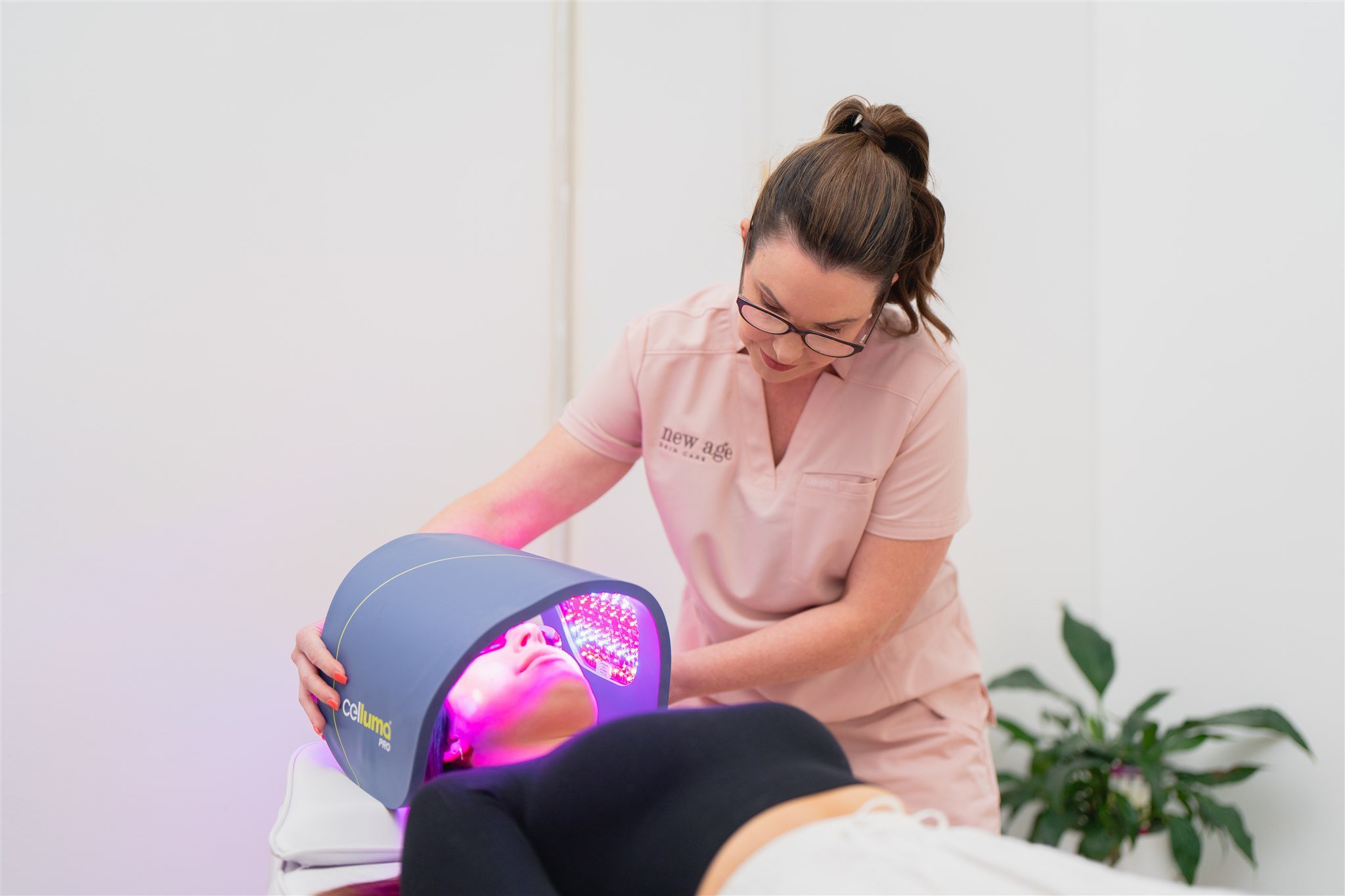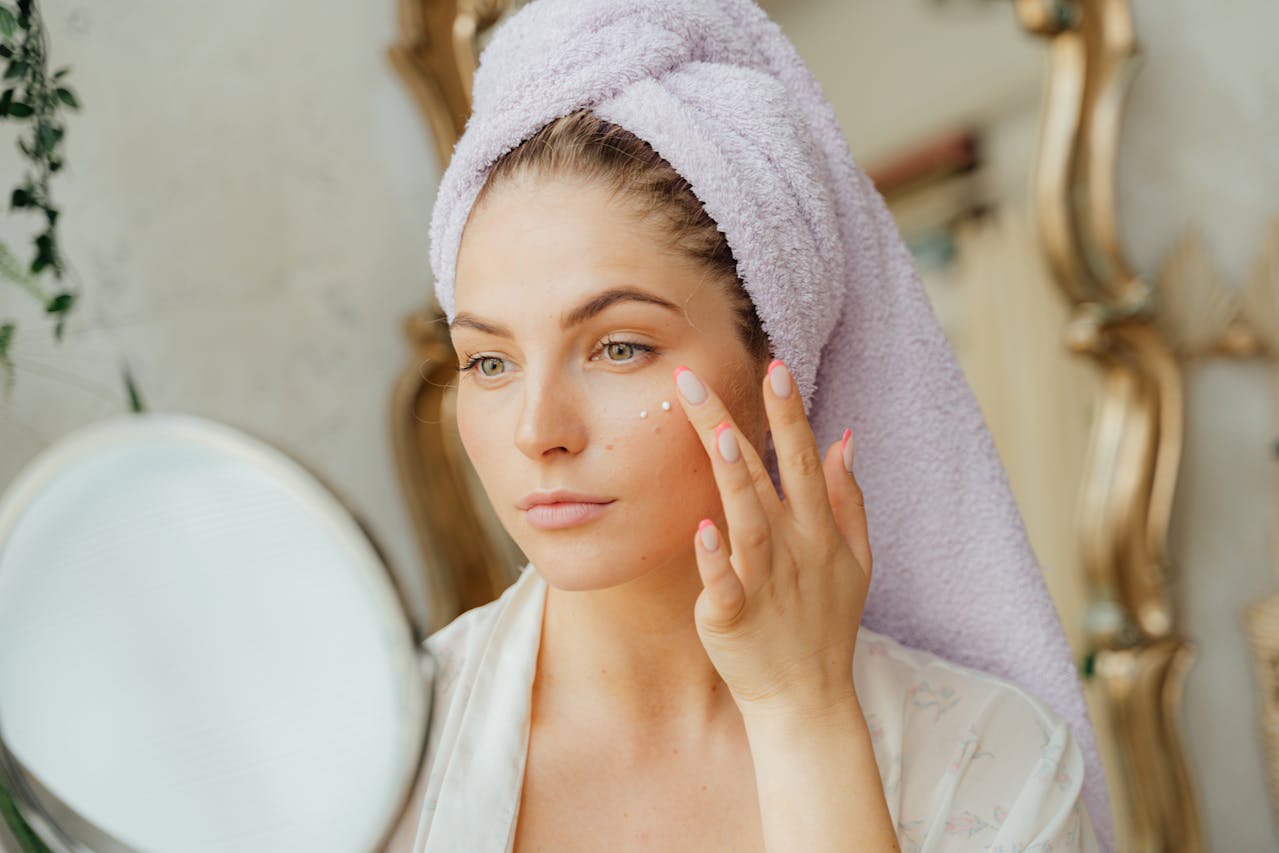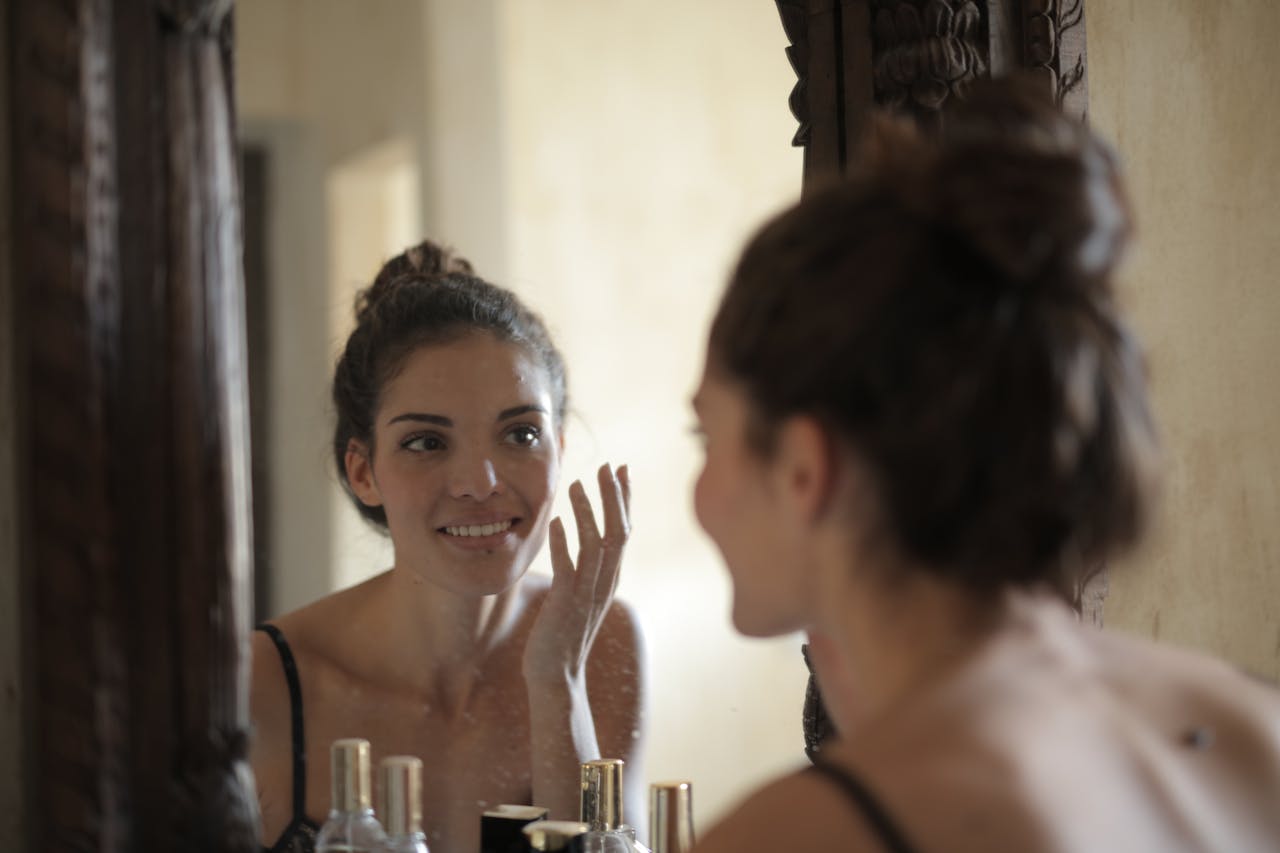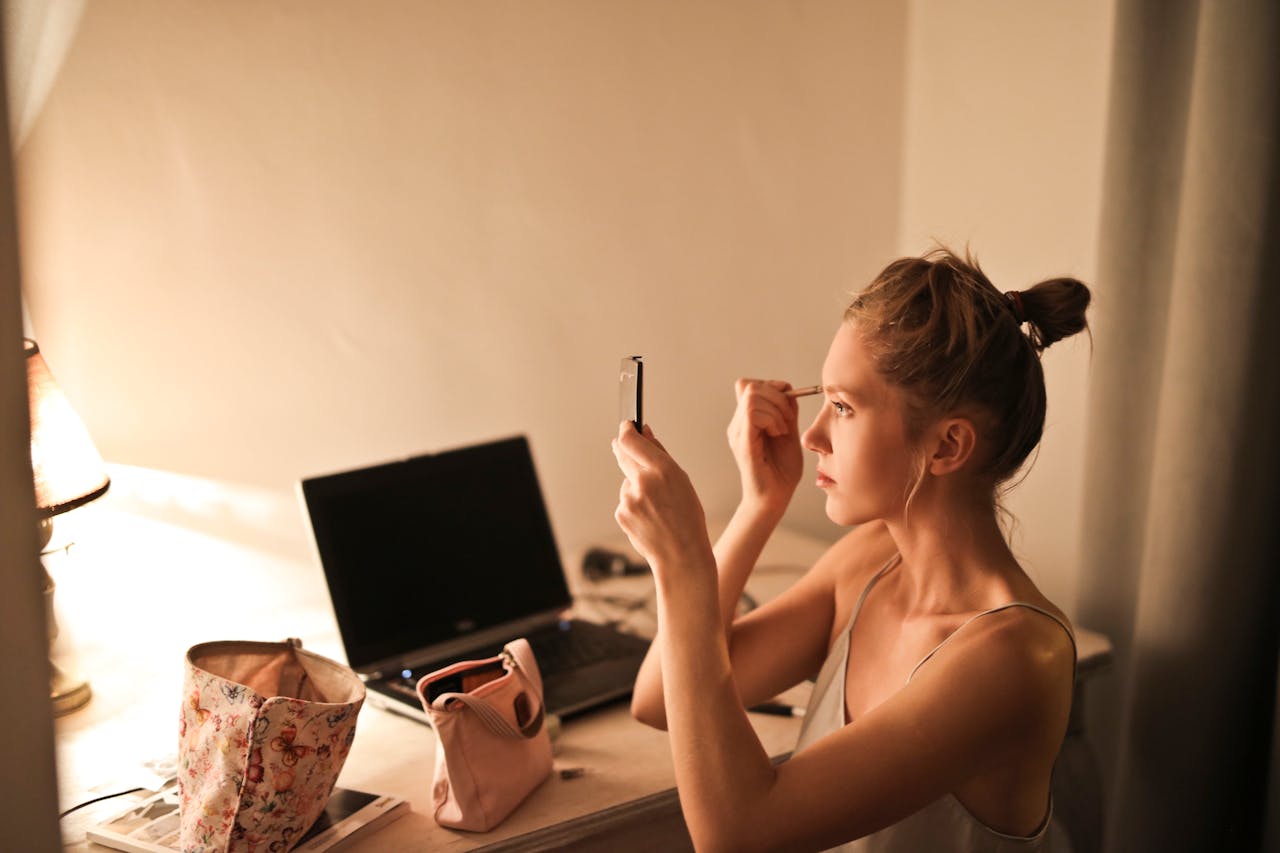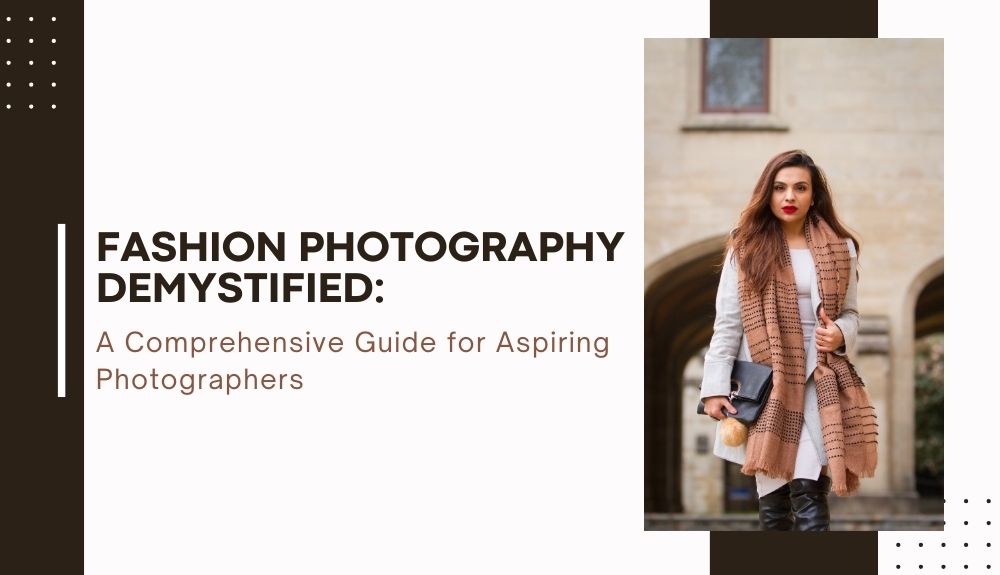Fashion Photography Demystified: A Comprehensive Guide for Aspiring Photographers
Are you an aspiring photographer looking to make your mark in the world of fashion? Do you find fashion photography intriguing yet intimidating? Look no further! In this comprehensive guide, we will demystify the art of fashion photography and provide you with the information you need to kick-start your career.
Imagine being able to capture the essence and mood of a fashion brand through your lens, creating stunning images that bring garments to life. With the right techniques and knowledge, you can turn that dream into reality.
In this blog, we will delve into the world of fashion photography, exploring everything from equipment and lighting to posing and composition. We’ll share tips and tricks from seasoned professionals, helping you avoid common pitfalls and find your unique style.
1. Choosing the right camera and lenses for fashion photography
2. Mastering lighting techniques to create impactful images
3. Posing and directing models to convey the desired message
4. Composition and creative elements for visually stunning photographs
5. Post-processing tips to enhance your images and bring your vision to life
Get ready to unlock the secrets of fashion photography and elevate your skills to new heights.
1. The Basics of Fashion Photography
Fashion photography is a captivating and dynamic field that combines the artistry of photography with the beauty and allure of fashion. It requires a keen eye for detail, an understanding of aesthetics, and the ability to capture the essence of clothing and accessories in a visually appealing manner. Whether you are an aspiring photographer looking to break into the fashion industry or simply interested in learning more about this fascinating art form, this section will provide you with a comprehensive overview of the basics of fashion photography.
1. Understanding the Fashion Industry
To excel in fashion photography, it’s crucial to have a solid understanding of the fashion industry itself. Stay up to date with the latest trends, designers, and brands. Familiarize yourself with fashion magazines, editorials, and fashion shows to gain insights into the overall aesthetic and style of the industry.
2. Mastering Lighting Techniques
Lighting is a fundamental element in photography, and mastering lighting techniques is paramount in fashion photography. Understanding how to manipulate natural light, as well as effectively using studio lighting setups, is key to creating stunning and impactful images. Experiment with different lighting setups, such as softbox lighting, to achieve the desired mood and ambiance in your fashion photographs.
3. Composition and Posing
Composition plays a crucial role in fashion photography. Pay attention to the placement and arrangement of the elements within your frame. Experiment with different angles, leading lines, and negative space to create visually captivating images. Additionally, understanding how to direct and pose models is essential for capturing dynamic and engaging fashion photographs. Learn how to communicate with your subjects, making them feel comfortable and confident in front of the camera.
4. Styling and Set Design
Collaboration is a vital aspect of fashion photography. Work closely with stylists, makeup artists, and set designers to create a cohesive vision for your fashion shoot. Consider the overall theme, color palette, and mood you want to convey in your photographs. Attention to detail in styling, including selecting the right garments, accessories, and props, will elevate your images and add depth to your fashion storytelling.
5. Editing and Retouching
Post-processing is an integral part of the fashion photography workflow. Familiarize yourself with photo editing software, such as Adobe Photoshop or Lightroom, to enhance your images. Pay careful attention to color grading, skin retouching, and overall image refinement. It’s crucial to maintain a balance between enhancing the visual appeal of the photograph and maintaining the authenticity of the subject.
2. Essential Equipment for Fashion Photography
When it comes to fashion photography, having the right equipment is crucial in capturing stunning images. Here is a comprehensive list of essential gear that every aspiring fashion photographer should consider investing in:
1. Camera Body:
A high-quality DSLR or mirrorless camera body is the foundation of any fashion photographer’s toolkit. Look for a model that offers a high resolution and excellent low-light performance. Some popular options include the Canon EOS 5D Mark IV and the Nikon D850.
2. Lenses:
Investing in a range of lenses will allow you to capture different types of shots and create diverse visual effects. Here are a few lens options that are commonly used in fashion photography:
Prime Lens (50mm or 85mm): These lenses offer a wide maximum aperture, allowing you to achieve that beautiful shallow depth of field and stunning bokeh effect.
Zoom Lens (24-70mm or 70-200mm): These lenses provide versatility, allowing you to capture wide-angle shots as well as close-up details.
3. Lighting Equipment:
Fashion photography often requires controlled lighting to highlight the subject and bring out the intricate details of the garments. Consider investing in the following lighting equipment:
Studio Lighting Kit: A set of studio lights, including softboxes, umbrellas, and strobes, will give you control over the lighting in your shoots.
Reflector: A reflector helps bounce light onto your subject, filling in shadows and creating a more balanced lighting setup.
Light Meter: A light meter helps you measure and control the intensity of your lighting, ensuring consistent exposure across your images.
4. Tripod:
A sturdy tripod is essential for achieving sharp, well-composed images, especially when working with slower shutter speeds or in low-light conditions. Look for a lightweight yet durable option that is easy to carry on location shoots.
5. Memory Cards and External Storage:
Fashion shoots often involve capturing numerous high-resolution images. Make sure you have enough memory cards with ample storage capacity to avoid running out of space. Additionally, consider using external hard drives or cloud storage to backup and store your files securely.
6. Camera Bag:
Invest in a reliable camera bag or backpack to protect and organize your equipment. Look for one that offers adequate padding, compartments, and easy accessibility for quick equipment changes during shoots.
Remember, investing in high-quality equipment can significantly impact the quality and professionalism of your fashion photography.
3. Understanding Lighting Techniques in Fashion Photography
Lighting plays a crucial role in fashion photography. It can make or break a shot, enhancing the beauty of the subject, highlighting textures, and emphasizing the message behind the image. In this section, we will explore various lighting techniques used by professional fashion photographers to create stunning and impactful visuals.
1. Natural Lighting:
Natural light is a popular choice in fashion photography as it helps to achieve a soft and flattering look. Photographers often utilize golden hour lighting, which occurs during sunrise or sunset, to capture warm and glowing images. Shooting outdoors or near large windows can also provide ample natural light that brings out the natural colors and features of the subject.
2. Studio Lighting:
Studio lighting offers a controlled environment where photographers have complete command over the lighting setup. They can use different types of lights, modifiers, and reflectors to manipulate the intensity, direction, and quality of light. Common studio lighting setups include:
Rembrandt Lighting: This technique involves positioning the main light at a 45-degree angle to the subject, creating a triangular highlight on the cheek opposite the light source. It adds depth and dimension to the image.
Butterfly Lighting: In this technique, the main light is placed above and directly in front of the subject, casting a soft shadow just below the nose. It creates a distinctive butterfly-shaped catchlight in the eyes.
Split Lighting: Split lighting involves placing the main light at a 90-degree angle to the subject, dividing the face into two equal halves, one in light and the other in shadow. It produces a dramatic effect, adding an element of mystery.
3. Off-Camera Flash:
Off-camera flash allows photographers to have greater control over the light’s direction and intensity. They can position the flash at different angles or use multiple flashes for more creative lighting effects. Off-camera flash is especially useful in low-light situations or when working in challenging lighting conditions.
4. Light Modifiers:
Photographers often employ light modifiers to shape and control the light further. Some commonly used light modifiers in fashion photography include:
Softboxes: These large, diffused light sources create soft, even lighting that minimizes harsh shadows.
Reflectors: Reflectors bounce light back onto the subject, filling in shadows and adding catchlights to the eyes.
Umbrellas: Umbrellas provide a wider spread of light, creating a softer and more diffused lighting effect.
4. Poses and Expressions in Fashion Photography
When it comes to fashion photography, posing and capturing the right expressions are essential to create captivating images that showcase the clothing and convey the desired message. Here are some tips and techniques to help aspiring photographers master poses and expressions in fashion photography:
1. Study Posing Techniques
a. Research different posing techniques used in fashion photography. Look for inspiration in fashion magazines, online portfolios, and runway shows.
b. Experiment with various poses and angles to understand how they can enhance the aesthetics of your images.
c. Practice directing models and providing clear instructions to achieve desired poses.
2. Understand Body Language
a. Learn to read and understand body language cues. Recognizing subtle shifts and movements can help you capture natural and engaging poses.
b. Pay attention to details like hand and leg placement, posture, and facial expressions.
3. Communicate with Models
a. Establish clear communication with the models you work with. Discuss the concept and mood of the shoot to guide them in portraying the desired emotions.
b. Offer guidance and feedback during the shooting process to ensure the models feel comfortable and empowered.
4. Expressions and Emotions
a. Fashion photography often requires models to convey specific emotions, such as confidence, allure, or playfulness.
b. Encourage models to experiment with different expressions, and guide them to evoke the desired emotion through subtle facial cues.
5. Use Movement to Your Advantage
a. Incorporate movement into your shots to add dynamism and energy to the images.
b. Experiment with fluid poses and capturing moments in-between poses to create a sense of motion.
6. Pay Attention to Details
a. Focus on small details like hand placement, head tilt, and eye gaze to enhance the overall composition of your images.
b. Use props or accessories strategically to add interest and complement the overall theme.
Remember, practice is key when it comes to mastering poses and expressions in fashion photography. Keep experimenting, learning from your mistakes, and refining your techniques as you grow as a photographer.
💡 key Takeaway: Mastering poses and expressions in fashion photography is vital for creating visually stunning and impactful images. By understanding body language, communicating with models effectively, and focusing on details, aspiring photographers can develop their unique style and capture captivating fashion photographs.
5. Styling and Wardrobe for Fashion Photography
Styling and wardrobe play a crucial role in creating captivating fashion photographs. As an aspiring fashion photographer, you need to understand how to effectively style your subjects and curate their wardrobe to bring your vision to life. In this section, we will delve into the key aspects of styling and wardrobe selection that will help you create stunning fashion photographs.
1. Understand the Concept: Before you begin styling a fashion shoot, it’s essential to have a clear understanding of the concept or theme you want to portray. Whether it’s high fashion, street style, or a particular era-inspired shoot, your concept will guide your choices for styling and wardrobe.
2. Communicate with Your Team: Collaboration is key in fashion photography, so make sure to communicate your vision to your team, including the models, stylists, and hair and makeup artists. Aligning everyone’s understanding of the concept will ensure a cohesive look and feel throughout the shoot.
3. Research and Mood Boards: Conduct thorough research to explore different fashion trends, designers, and visual references that align with your concept. Create mood boards or digital collages to gather inspiration and visualize the overall aesthetic you want to achieve.
4. Choose Appropriate Clothing: Selecting the right clothing pieces for your shoot is crucial. Consider the colors, textures, and silhouettes that will enhance your concept and flatter your models. Make sure the clothing fits well and adds visual interest to your composition.
5. Pay Attention to Details: From accessories to shoes, paying attention to details can elevate the overall look of your fashion photographs. Accessories like statement jewelry, hats, or belts can add an extra layer of interest and contribute to the narrative you’re creating.
6. Experiment with Layers and Textures: Layering different clothing pieces and playing with textures can add depth and dimension to your photographs. Mixing patterns, fabrics, and materials can create visual interest and make the images more dynamic.
7. Consider Hair and Makeup: In fashion photography, hair and makeup play an integral part in achieving the desired look. Collaborate with a skilled hair and makeup artist to enhance the overall styling and bring the concept to life through cohesive beauty choices.
8. Incorporate Props: Props can help enhance the storytelling aspect of your fashion photographs. Whether it’s a vintage car, a lavish set, or unique objects relevant to your concept, they can add depth and context to your images.
6. Location Scouting for Fashion Photography
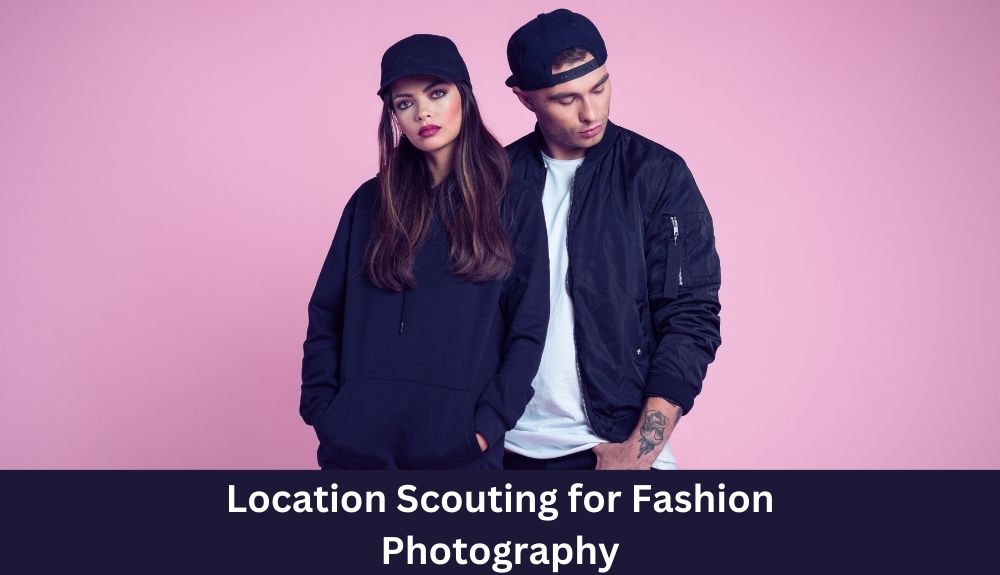
Finding the perfect location is essential for successful fashion photography. The right setting can enhance the mood, convey the desired message, and elevate the overall aesthetic of the images. Here are some key considerations and steps to follow when scouting locations for fashion photography:
1. Start with a Concept: Before you begin your search, it’s important to have a clear concept in mind. Consider the theme, style, and mood you want to capture in your photos. Whether it’s urban chic, bohemian elegance, or high fashion glamour, the concept will guide your location hunt.
2. Research Potential Locations: Begin by researching potential locations that align with your concept. Look for places that have the right ambiance, architectural elements, or natural landscapes that complement your vision. Fashion magazines, online platforms, and social media can serve as great sources of inspiration.
3. Visit in Person: Once you have a list of potential locations, make time to visit them in person. This will give you a firsthand experience of the site’s lighting conditions, the available angles, and the overall vibe. Take note of any unique features or limitations that may impact your shoot.
4. Consider Permits and Restrictions: Depending on the location, you may need permits or permissions to conduct a fashion shoot. Check with local authorities or property owners to ensure you are legally allowed to shoot there. Be aware of any restrictions that may limit your access or require additional fees.
5. Evaluate Practicality: While aesthetics are important, it’s also crucial to consider the practical aspects of the location. Think about logistics such as accessibility, parking, electricity availability, and whether there are ideal spaces for makeup, changing, and equipment storage. These practical considerations can significantly impact the efficiency of your shoot.
6. Test Lighting Conditions: Lighting plays a vital role in fashion photography. Visit your chosen location at different times of the day to assess how the natural light interacts with the environment. Take note of any potential challenges or opportunities for creating stunning visuals using natural or artificial lighting techniques.
7. Seek Unique Perspectives: To make your fashion photography stand out, try to find unique angles or perspectives within the location. Look for hidden corners, architectural features, interesting textures, or juxtapositions that can add visual interest and depth to your images.
8. Safety First: Prioritize the safety of your team, models, and equipment when scouting locations. Assess potential hazards, such as unstable structures, slippery surfaces, or busy traffic areas.
7. Working with Models in Fashion Photography
Photographing models in the fashion industry requires a unique set of skills and techniques. As a fashion photographer, you must not only capture stunning images but also work effectively with models to bring your creative vision to life. In this section, we will discuss some essential tips and considerations for successfully working with models in fashion photography.
1. Build a Strong Portfolio
Before approaching models, it is crucial to build a strong portfolio that showcases your skills and expertise in fashion photography. Potential clients and models will often request to see your previous work to assess your style and capabilities. Make sure your portfolio features diverse images, displaying your ability to capture different styles, moods, and poses.
2. Communication is Key
Establishing clear and effective communication with models is vital for successful fashion photography shoots. Start by discussing your concept and vision for the shoot, ensuring that both you and the model are on the same page. Clearly articulate your expectations regarding poses, expressions, and clothing, and encourage the model to share their ideas and suggestions as well.
3. Create a Comfortable Environment
Models perform best when they feel at ease and comfortable during the shoot. As a photographer, it is your responsibility to create a relaxed and enjoyable environment. Take the time to establish a friendly rapport with the model, make conversation, and provide positive feedback. This will help in bringing out their natural expressions and emotions, resulting in more authentic and compelling shots.
4. Directing and Posing
Although models are experienced in posing, it is essential for the fashion photographer to provide clear directions and guidance. Ensure that the model understands the desired body language, facial expressions, and hand movements. Be prepared to offer specific instructions on how to achieve the desired poses and experiment with different angles and perspectives to create visually striking images.
5. Utilize Natural Light and Studio Lighting
Fashion photography can be done in various settings, whether it’s outdoors or in a studio. When working with natural light, pay attention to the direction and quality of light, as it can greatly impact the mood and aesthetics of your images. In a studio setting, experiment with different lighting setups, such as softboxes, strobes, or continuous lighting, to create the desired ambiance and highlight the garments or accessories.
6. Collaborate with Hair and Makeup Artists
Collaborating with hair and makeup artists adds an extra layer of professionalism to your fashion photography shoots. These artists can help transform the model’s appearance, enhancing their features.
8. Makeup and Hair Styling for Fashion Photography
To create stunning fashion photographs, it’s essential to pay attention to the makeup and hair styling of the models. The right makeup and hairstyling can enhance the overall aesthetic of the images, bring out the desired emotions, and complement the fashion garments being showcased. In this section, we’ll explore the key elements of makeup and hair styling in fashion photography and provide tips on how to achieve the desired looks.
1. Understanding the Concept and Mood:
Before starting a fashion photoshoot, it’s crucial to have a clear understanding of the concept and mood you want to convey. Discuss with your team, including the fashion styand models, to determine the desired makeup and hair styling that will align with the overall vision. Whether you’re aiming for a natural and effortless look or a bold and avant-garde aesthetic, having a well-defined concept will guide your choices throughout the process.
2. Collaborating with Makeup Artists and Hair Sty
Working with professional makeup artists and hair styis highly recommended for fashion photography. These experts have the skills and experience to create the desired looks and know how makeup and hairstyles translate on camera. Collaborate closely with them to share your vision, provide references, and allow them to showcase their creativity while staying aligned with the concept.
3. Preparing the Models’ Skin and Hair:
Before the shoot day, advise the models to take proper care of their skin and hair. Encourage them to follow a skincare routine to ensure a smooth and glowing complexion. Similarly, suggest that they maintain their hair health by using appropriate products and treatments. Well-prepared skin and hair will make the makeup and hairstyling process easier and help achieve optimal results.
4. Customizing Makeup and Hairstyles:
Every fashion shoot is unique, and so should be the makeup and hairstyles. Work with the makeup artist to create looks that enhance the models’ features, complement their outfits, and align with the desired mood. Focus on achieving flawless skin, defined eyebrows, enhanced eyes, and well-contoured features. For hair styling, consider factors such as the length, texture, and color of the hair to create versatile and striking looks.
5. Paying Attention to Details:
In fashion photography, it’s the little details that make a significant difference. Ensure that the makeup artist and hair stylist pay attention to every detail, from perfectly blended foundation to well-defined lip lines.
9. Editing and Retouching Techniques in Fashion Photography
Editing and retouching play a crucial role in achieving the desired look and feel in fashion photography. By employing the right techniques, photographers can enhance the overall aesthetic and appeal of their images. In this section, we will explore some essential editing and retouching techniques that aspiring fashion photographers should be familiar with.
1. Image Selection and Sorting
Before diving into the editing process, it’s important to review and select the best images from your photo shoot. Look for shots that capture the essence of the fashion concept, are well-composed, and showcase the garments or accessories effectively. Sorting through your images will streamline the editing process and help maintain a consistent style throughout your portfolio.
2. Color Correction and White Balance Adjustment
Achieving accurate colors is essential in fashion photography, as it helps convey the intended mood and enhances the visual impact. Utilize software tools such as Lightroom or Photoshop to adjust the color temperature, contrast, and saturation to create a cohesive and professional look. Pay attention to white balance to ensure that the colors appear natural and true to life.
3. Skin Retouching and Enhancement
In fashion photography, models’ skin often needs retouching to achieve a flawless appearance. However, it’s crucial to strike a balance between natural and overly edited skin. Use techniques like frequency separation to smooth out imperfections while preserving the texture and maintaining a realistic look. Pay attention to details such as blemishes, wrinkles, and stray hairs to refine the overall image.
4. Dodge and Burn Technique
The dodge and burn technique allows photographers to selectively lighten or darken specific areas of the image, adding depth and dimension. This technique is particularly useful in fashion photography to emphasize contours, highlight details, and create a three-dimensional effect. Use these tools subtly and sparingly to avoid an unnatural appearance.
5. Sharpening and Clarity Adjustment
To enhance the overall sharpness and clarity of your fashion images, use sharpening and clarity adjustment tools. Sharpening helps to emphasize details and create a crisp appearance, while clarity adjustment enhances mid-tone contrast and adds depth. Aim for a balance that enhances the image without introducing artifacts or excessive noise.
💡 key Takeaway: Editing and retouching are crucial steps in fashion photography for achieving the desired aesthetic and appeal. Techniques such as image selection, color correction, skin retouching, dodge and burn, and sharpening can greatly enhance the quality of your fashion photographs.
10. Creating a Portfolio for Fashion Photography
Your portfolio is your key to showcasing your skills, creativity, and capabilities as a fashion photographer. It serves as a visual resume that potential clients, agencies, or employers will review to determine if you have the right style and expertise for the job. In this section, we will explore the essential elements of creating a compelling fashion photography portfolio.
1. Define your niche: Start by identifying your unique style and the niche within fashion photography that you excel in. Are you inclined towards high fashion editorials, street style, commercial campaigns, or runway photography? Defining your niche will help you focus your portfolio and attract clients who are specifically looking for your expertise.
2. Curate your best work: Selecting the best images for your portfolio requires careful consideration. Choose images that showcase your technical skills, creativity, and ability to capture the essence of fashion. Aim for a diverse range of shots that highlight your versatility as a photographer. Include images that demonstrate your proficiency in lighting, composition, posing, and post-processing techniques.
3. Quality over quantity: Remember that quality always trumps quantity when it comes to your portfolio. It’s better to have a selection of strong, impactful images rather than a large collection with inconsistent quality. Aim for a streamlined portfolio that showcases your absolute best work. Typically, 15-20 carefully curated images are sufficient to make a strong impression.
4. Show your range: While curating your portfolio, make sure to display your range as a fashion photographer. Include images that highlight different genres, styles, and moods. This will demonstrate your versatility and adaptability, which are highly valued traits in the industry.
5. Tell a story: A compelling portfolio is not just a collection of beautiful images; it should also tell a cohesive story. Organize your images in a way that creates a narrative or evokes a specific mood. Consider the flow and arrangement of images to ensure a seamless transition from one shot to another. This storytelling element will engage viewers and leave a lasting impression.
6. Consider the layout: The visual presentation of your portfolio is crucial. Choose a clean and minimalistic layout that allows your images to take center stage. Avoid distracting backgrounds or cluttered designs that may divert attention from your photography. Invest in a professional website or portfolio platform that provides a user-friendly and visually appealing interface to showcase your work.
11. Networking and Building Relationships in the Fashion Industry
Networking and building relationships are crucial in any industry, but they play a particularly important role in the fashion industry. As an aspiring fashion photographer, developing a strong network can open up numerous opportunities and help you establish yourself in the industry. Here are some key strategies to consider when it comes to networking and building relationships in the fashion industry:
1. Attend Fashion Events and Shows:
Make it a priority to attend fashion events and shows in your area. These include fashion weeks, runway shows, industry conferences, and trade shows. These events provide a platform to meet industry professionals, including models, designers, stylists, makeup artists, and other photographers. Networking at such events allows you to showcase your work, exchange ideas, and connect with potential clients or collaborators.
2. Join Professional Associations and Groups:
Become a member of professional associations and groups specific to the fashion industry. There are numerous organizations that cater to photographers, such as the Fashion Group International, Professional Photographers of America, or local photography associations. These organizations often host networking events, workshops, and seminars that provide valuable opportunities to meet and connect with other professionals in the fashion industry.
3. Build an Online Presence:
In today’s digital age, having a strong online presence is essential for networking and establishing credibility. Create a professional website or portfolio that showcases your work and capabilities as a fashion photographer. Utilize social media platforms like Instagram, Facebook, and LinkedIn to connect with industry professionals, share your work, and engage with potential clients. Maintain an active online presence by regularly posting high-quality content and engaging with your audience.
4. Collaborate with Other Creatives:
Collaboration is a powerful tool for networking and expanding your reach in the fashion industry. Seek opportunities to collaborate with models, fashion designers, stylists, and makeup artists on creative projects. These collaborations not only enhance your portfolio but also allow you to build strong working relationships with other professionals. Look for fashion-related projects in your local community or consider reaching out directly to individuals you would like to work with.
5. Assist Established Photographers:
Consider reaching out to established fashion photographers in your area and offer your assistance. Assisting experienced photographers provides invaluable learning opportunities, exposure to the industry, and a chance to build connections. By working side by side with established professionals, you can gain insights into their workflows, techniques, and industry contacts.
12. Marketing Yourself as a Fashion Photographer
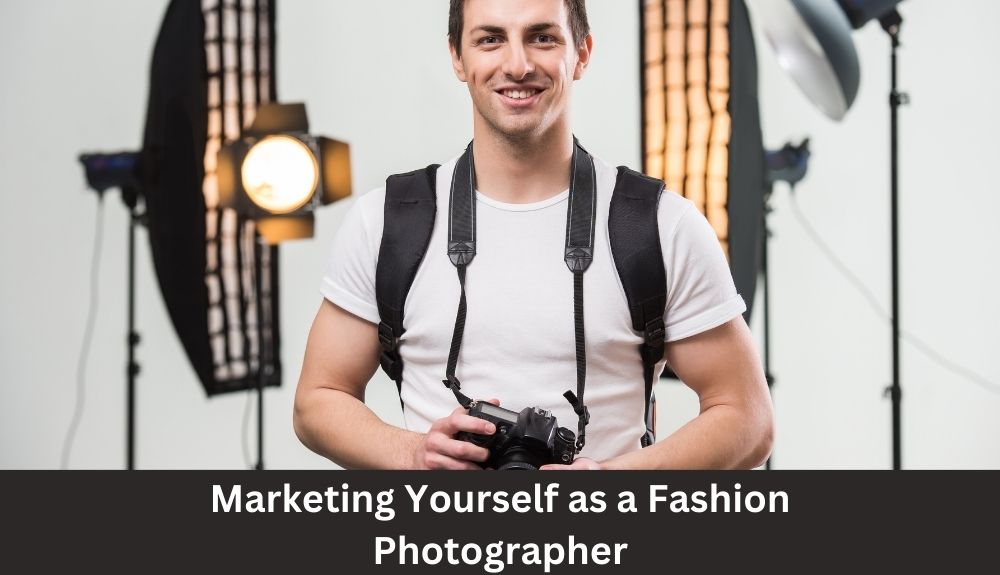
In the highly competitive world of fashion photography, talent alone is not enough to succeed. As an aspiring fashion photographer, you need to effectively market yourself and stand out from the crowd. This section will provide you with valuable insights and strategies to help you establish a strong personal brand and attract potential clients.
Building Your Online Presence:
- Create a visually appealing and user-friendly website to showcase your portfolio.
- Optimize your website for search engines by using relevant keywords, meta tags, and alt text for your images.
- Regularly update your website with new and high-quality work to demonstrate your growth and versatility.
- Utilize social media platforms, such as Instagram and Pinterest, to share your work and engage with a wider audience.
Networking and Collaboration:
- Attend industry events, workshops, and fashion shows to network with designers, models, and other industry professionals.
- Collaborate with emerging designers and stay to create fashion editorials or lookbooks that showcase your unique style.
- Join photography communities and online forums to connect with like-minded individuals and exchange knowledge and experiences.
Building Relationships with Agencies and Clients:
- Research and reach out to fashion agencies, magazines, and brands that align with your aesthetic and style.
- Tailor your portfolio and pitch to the specific needs and preferences of each potential client.
- Offer your services for editorial shoots, campaigns, or lookbooks to gain exposure and establish relationships within the industry.
Creating Compelling Marketing Materials:
- Design and print professional business cards and postcards with your best work and contact information.
- Develop a captivating portfolio book or digital presentation to leave a lasting impression on potential clients.
- Craft a compelling and concise bio that highlights your expertise, experience, and unique approach to fashion photography.
13. Staying Inspired and Evolving as a Fashion Photographer
In the dynamic world of fashion photography, staying inspired and continuously evolving is essential to thrive and stand out as a photographer. Here are some valuable tips and strategies to keep your creativity flowing and to elevate your skills as a fashion photographer.
1. Cultivate a Fashion-forward Mindset:
As a fashion photographer, it’s crucial to immerse yourself in the world of fashion and keep up with the latest trends. Follow fashion blogs, magazines, and social media accounts to stay informed about current styles, designers, and industry influencers. This will help you gain insights into emerging fashion concepts and contribute to your ability to create innovative and on-trend photographs.
2. Collaborate with Creative Professionals:
Collaboration is key to expanding your creative horizons and building a strong network in the fashion industry. Reach out to stylists, makeup artists, models, and designers to collaborate on fashion shoots. When working with a team of talented individuals, you’ll have the opportunity to bounce ideas off each other, experiment with different concepts, and create visually captivating images.
3. Attend Fashion Events and Shows:
To stay inspired and connected, make it a point to attend fashion events, runway shows, and exhibitions. These events provide a wealth of inspiration and networking opportunities. Observing the work of renowned fashion photographers, studying creative fashion presentations, and mingling with industry professionals can ignite fresh ideas and perspectives, helping you evolve your style.
4. Conduct Personal Projects:
Engaging in personal projects gives you the freedom to explore your creativity without any limitations. Choose a theme or concept that resonates with you, and challenge yourself to experiment with different techniques and styles. Personal projects allow you to push your boundaries, refine your skills, and showcase your unique vision as a fashion photographer.
5. Keep Learning and Updating Your Skills:
Fashion trends and photography techniques evolve rapidly. To stay ahead of the game, invest in your education and continuously update your skills. Attend workshops, seminars, and online courses that focus on fashion photography and related subjects. Enhancing your technical knowledge and learning about the latest editing techniques and equipment can significantly elevate the quality of your work.
6. Seek Feedback and Critique:
Feedback is invaluable for growth and improvement. Join photography communities, online forums, or mentorship programs where you can connect with experienced professionals. Sharing your work and seeking constructive criticism from peers and industry experts will allow you to identify areas of improvement.
Conclusion
In conclusion, fashion photography may seem intimidating, but with passion, practice, and perseverance, anyone can master the art. By understanding the elements of composition, lighting, and styling, aspiring fashion photographers can create captivating images that tell a story and evoke emotions. Remember, fashion photography is not just about capturing beautiful clothes and models; it’s about creating a visual narrative that speaks to the audience. Experiment with different angles, poses, and locations to add depth and intrigue to your photos. Furthermore, don’t be afraid to collaborate with other creative professionals such as stylists, makeup artists, and models. Working as a team can bring fresh perspectives and elevate your work to new heights.
